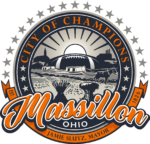The City of Massillon Infrastructure is under the responsibility of the Engineering Department. These include: City of Massillon Roads, Bridges, Wastewater Treatment Facility, Sewer Collection System, Pump Stations, Drainage structures, and Engineering Vehicles and Equipment.
The municipal infrastructure typically represents one of the largest investments for a community. The City of Massillon’s infrastructure replacement value has been conservatively estimated at over $ 325,000,000. Consequently, it is very important that the City’s infrastructure continue to be managed efficiently and effectively.
The benefits of a comprehensive municipal infrastructure plan include: a better understanding of the total infrastructure needs within the community, improved management practices and better decision making; increased ability to determine the overall infrastructure replacement/repair costs thus allowing officials to seek the most appropriate funding options from local, state and federal sources; and less time and effort to update annual operating and capital budgets.
Funding:
The City of Massillon identifies and prioritizes its anticipated capital expenditures each year in a five year Capital Improvement Program (CIP). The CIP has two major components: the Capital Budget, which is the first year of the program; and the Capital Plan, which is represented by the remaining four years. Presently, the replacement/repair costs for infrastructure under the jurisdiction of the Engineering Department is funded through various methods such as Income Tax, Sanitary Sewer Fees, Municipal Road Funds, License Plate Fees, the Ohio Public Works Commission, Stark County Area Transportation Study, and State and Federal grants.
The municipal infrastructure is vitally important to the social, economic and environmental well being of our community. While infrastructure repair and replacement can be costly, it should be viewed as an investment in the future of the City of Massillon.
